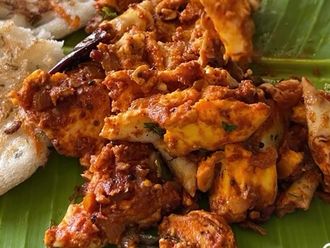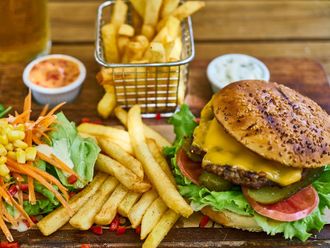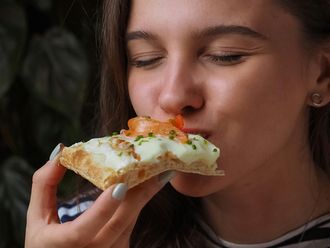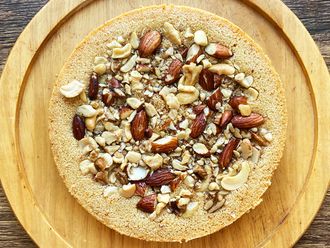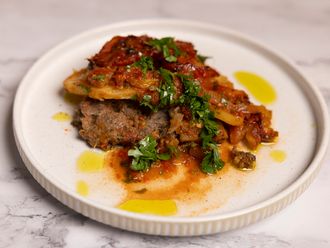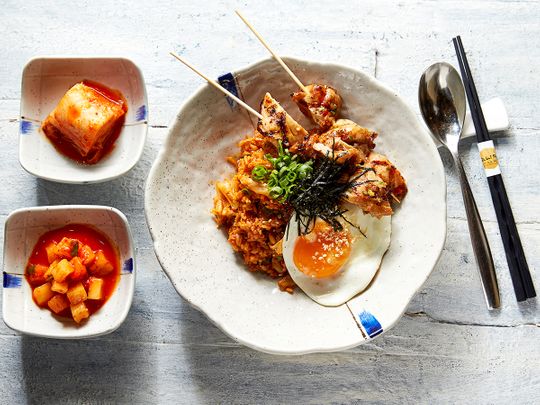
We’ve all known the feeling – watching chocolate pouring in impossibly smooth ripples on a television advertisement, or the dawning look of ecstasy on the face of that on-screen persona trying an enticingly steaming dish on a mukbang or eating broadcast, and next thing you know, you’re looking for delivery options or ingredients.
Replace the chocolate with creamy red tteokbokki sauce rippling into a bowl to accompany rice cakes, and a steaming dish with sizzling barbecue eaten by my favourite stars, and there you have summarised my journey into Korean cooking. Having newly become a part of the ARMY (the fandom associated with band BTS) in 2017, drawn by the intricacy and thought-provoking messages of their music, I had begun to foray into their reality TV and online content to find out more. Behind their impeccably danced, glittering performances set to soul-stirring music, what was their daily life like?
One of the answers was an immensely diverse food universe. From the omnipresent Shin Ramyeon cup noodles, to much-loved jjajangmyeon (black bean noodles) and bibimbap (rice hotpot) they ate when they were struggling as trainees, to me, every video had an enigmatic dish heartily loved by people I admired. Their first anniversary as a band was celebrated by the eldest member making a simmering webfoot octopus and meat dish with japchae, a sweet potato, glass noodle dish.
For birthdays, they would discuss traditional miyeokguk, or seaweed soup, and for New Year’s, it was symbolic rice cake soup, also called tteokguk. Backstage on-standby for demanding shows, they would sometimes munch on Korean rice rolls, gimbap (rice rolled in seaweed) and tteokbokki. This is not to mention the excitement, laughter and joyful exclamations accompanying the theatrical on-table barbecues, complete with an astonishing array of small dishes to complement the meat.
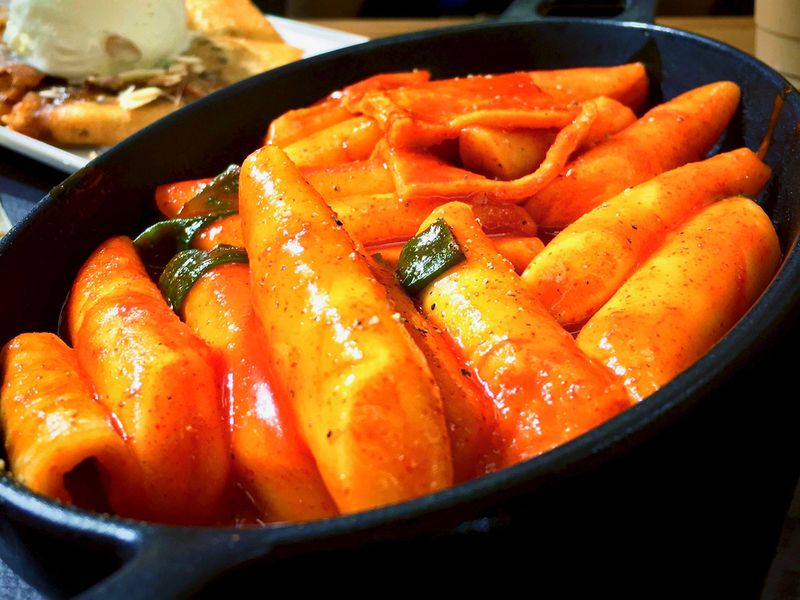
The food was not only a spectacle to behold, but also full of interesting, symbolic stories; the miyeokguk signified honouring one’s mother by eating the food they traditionally have after childbirth – the iodine-rich seaweed soup. The tteokguk? Eating a bowl of the thinly sliced rice cakes signifies becoming one year older - an auspicious dish paying homage to purity, a fresh start to the year and wealth, amongst others. Naturally, I was very curious. What did all those dishes taste like?
I started off very small, trying Korean ramyeon or instant noodles, which immediately became a comfort food. Finding it hard to find other Korean dishes at my university in the UK, I set out to make tteokbokki with my housemate, an EXO (Korean band) fan, who fortunately had the elusive central ingredient bought online - gochujang or Korean red chili paste. With its seemingly spicy and flavour-laden red sauce and squishy rice cakes, this popular street food was what I most yearned to try.
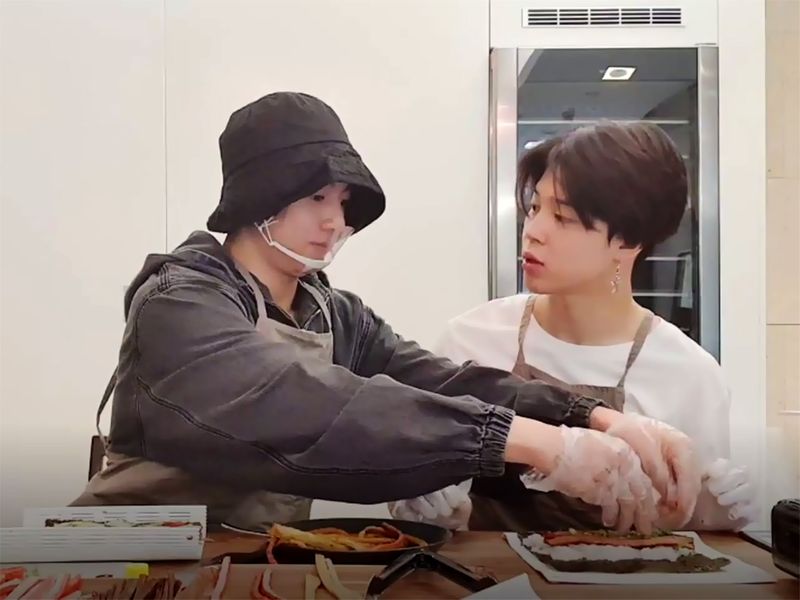
Admittedly, the attempt was somewhat haphazard, with my university housemate and I boiling canned tuna in a cheese grater over water, to replace the dried anchovy base. Nevertheless, I remember the strangeness of those first mouthfuls – the rich spicy-sweet fermented depth of gochujang tinged with fishiness, what could be labelled as umami, and the warm, filling glutinous rice cakes (to sink your teeth into). A respite from the overwhelming flavour was the refreshing crunch of briefly stir-fried bell peppers and cabbage. We played with the recipe, adding ramyeon, mozzarella, vegetables to make it healthier, and it soon became a frequent meal, with freshly steamed rice of course.
From then onwards, I tried various types of kimchi, also making fried rice, japchae, Korean fried soya chunks (my family is vegetarian) and spicy braised tofu. Without my noticing, my tastes had slowly acclimatised, growing to crave kimchi and the flavour of gochujang. Now back in the UAE, my next cuisine milestone was to be trying Korean barbeque with my colleague, Sahar, who had been a devoted SHINee (Korean band) fan, or Shawol, for the past 10 years. She recounts her own journey to Korean cuisine below.
The BTS Meal and the transgenerational lure of K-culture
It was a Friday night, and as is standard practice on weekends, my parents were exempt from dinner duties for the day. This, of course, did not go unnoticed by my 10-year-old niece, whose whines I could hear all the way from my room as I thought to myself, sprawled in bed: “Let the hunger games begin.”
“Please,” she strung the word out in a wobbly plea, nearly on the verge of tears that I knew she was saving for later, when and if stronger ammunition was needed. Deciding on what to eat was a weekly battle at home and more often than not my parents’ oldest grandchild unsurprisingly emerged victorious.
“What is this BTS Meal?” I heard my mother snap at her, making me laugh out loud in surprise – well, that was unexpected.
Returning to the K-drama playing on my laptop – for those curious, it had been ‘Doom at Your Service’ starring Park Bo-Young and Seo In-Guk – I thought about how bizarrely remarkable the lure of Korean popular culture was or rather how transgenerational. Here I was in my mid-twenties, having been an avid consumer of the said culture for more than a decade, watching my brother’s daughter take a fierce liking to something that was and still is very personal to my life.
When I was learning the speedy moves to SHINee’s ‘Love Like Oxygen’ in Grade 10, the music video routinely played on the local cable at the time, she hadn’t even been born yet. I would be lying if I said it didn’t make me feel some type of way, seeing my overzealous fangirling days mapped out on a pre-teen who could not stop drawing a pair of purple trapezoid doors for the neighbour’s kid for a week straight. A self-proclaimed ARMY, my niece had taken it upon herself to carefully sketch and colour the group’s logo on our A4-sized printing sheets to share them with her friend.
Some more strategic pleading and whimpering ensued from the living room. When she walked into my room with a tear-stained face, I knew that my niece was finally trying the BTS Meal that night. This was her first venture into Korean food – well, in a roundabout way. South Korea’s McDonald’s Cajun and Sweet Chili dipping sauces landed in local branches here for a limited period of time to go with 10 pieces of nuggets.

Here in the UAE, we were thrilled by the level of excitement that we witnessed on our social media channels and with the many fans that ordered the BTS Meal through our McDonald’s App.
Walid Fakih, General Manager at McDonald’s UAE, told Gulf News: “Here in the UAE, we were thrilled by the level of excitement that we witnessed on our social media channels and with the many fans that ordered the BTS Meal through our McDonald’s App.”
In hindsight, the meal does sound a lot like dakgangjeong, a popular snack in Korea that comprises bite-sized fried chicken glazed in a sticky sweet and spicy sauce. (Also, a dish I was lucky enough to get my hands on in Dubai, but we’re saving that for later.)
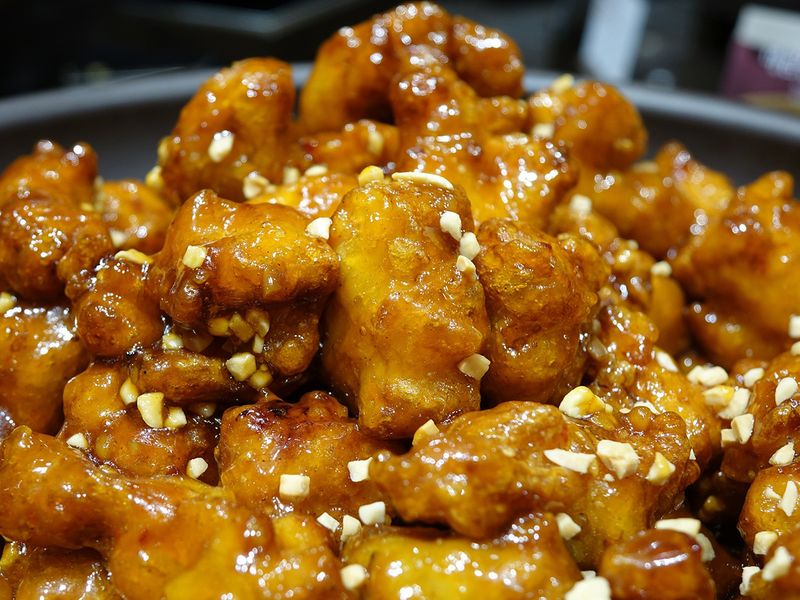
My tryst with Korean food, on the other hand, never went beyond the occasional cup of Samyang Ramyeon from my local grocery store. For one, the opportunity never arose living in Ajman. But watching Korean actors dig into their food like it’s their first meal in days always ignites a craving so bone-deep that my stomach lets out a Pavlovian growl every single time.
But, it’s not like food doesn’t exist in American, British, Thai or Turkish TV series. So, what’s the appeal? Back in 2007, Dubai TV bought the airing rights to ‘Dae Jang Geum’ (Jewel in the Palace in English), a historical telling of a royal chef who cooks her way up the ranks to become the King’s first-ever female physician in the Joseon era. The drama also featured some 1,600 food items. Soon, audiences in 86 countries, from Saudi Arabia to Peru, were tuning in to watch the protagonist whip up a simmering jeongol (hot pot) from their homes.
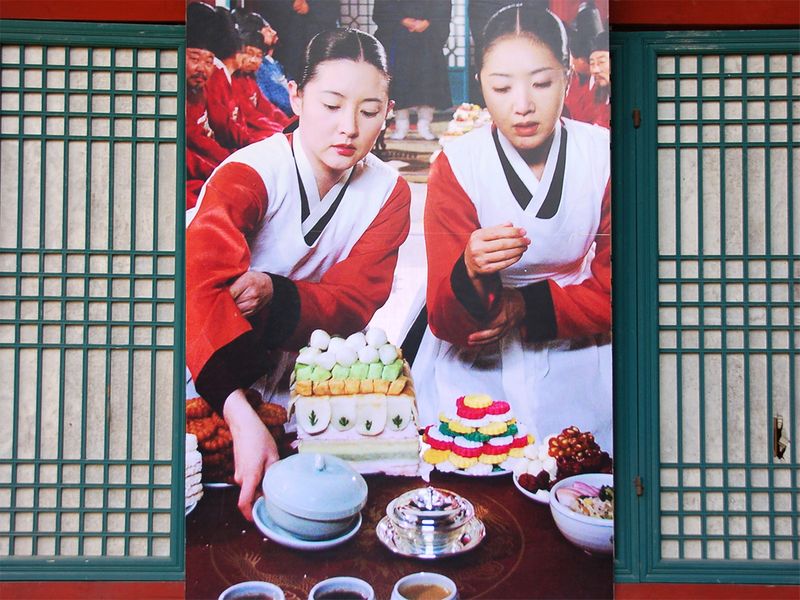
The crux of the matter is that Korean television has perfected the art of broadcasting food as a cultural product. Introducing Hansik (pronounced han-shik) or traditional Korean food to the global masses becomes easier when food is literally the way of life among its peoples. In her essay on ‘Consuming K-Drama Cuisine’ published in 2019, Jennifer Rachel Dutch, who is a UK-based author and academic, talks about how eating experiences on television resonate strongly with South Koreans since these occurrences are part of their identity, and we, the curious international viewers, begin to pick up on the table-spread staples.
By now, non-Korean fans probably recognise that a big bowl of bibimbap (cooked rice mixed with vegetables, minced beef, fried eggs and red chili paste) entails a heart-warming scene where the characters gather around to take a spoonful of the healthy assortment. A similar scene from the hit 2017 fantasy-romance drama ‘Strong Woman Do Bong Soon’ comes to mind: the titular protagonist Bong-Soon arrives at the hospital armed with rice and various banchan (side dishes including bean sprouts) to nurse her injured love interest Min-Hyuk through the power of bibimbap.
So after a quick Google search and some TikTok browsing, I recently gave into my decade-long curiosity and made it my sole mission to have a go at the famed Korean barbeque. I come from a Pakistani family, a household that cannot fathom boneless meat unless we’re having kheema or minced meat eaten with flat bread. Over the years, my palate has shifted enough that the smell of gosht (mutton) sends me flying to the farthest room of the house – though, I can very much wolf down beef burgers. It’s the bones, I tell myself, which should explain why I’m drawn to the tender, thinly sliced beef cuts of bulgogi.
With my colleague, Sraddha, in tow, this quest led me to try my first Korean barbeque.
Crash landing in the UAE
To say we are not alone in consuming these products of Korean culture here in UAE, would be an understatement. In fact, far from it – last year, not only was the Korean septet band BTS the most streamed artist on UAE’s Spotify, but the top show on Netflix locally so far in 2021 is the crime-comedy K-drama, Vincenzo. K-dramas are regularly present in Netflix’s top 10 in the UAE, with ‘Tale of the Nine-Tailed’ and ‘The Uncanny Counter’ being recent favourites. Amongst the Middle East and North African (Mena) countries, the UAE and Saudi Arabia are also the top consumers of K-pop music on Spotify, courtesy of what has been named the Hallyu or Korean wave: the international wave of rising interest in Korean popular culture.

Dubai-based food blogger Namrata Kamath from the online site She Said, She Said credits the romantic-comedy ‘Crash Landing on You’ for opening up an irresistible world of Korean food cravings for her. “While I have tried Korean food in the past and loved it, I never had cravings as much as I do when watching the shows. Watching people slurp on jjajangmyeon or excitedly munch on gimbap will leave anyone hungry,” she told Gulf News, adding that a weekly bowl of ramyeon is now part of her diet.

While I have tried Korean food in the past and loved it, I never had cravings as much as I do when watching the shows. Watching people slurp on jjajangmyeon or excitedly munch on gimbap will leave anyone hungry.
Running UAE-based Korean restaurants during this thunderous rise in local interest about K-pop, K-dramas and K-movies, it seems, has come with its own slew of fandom encounters. Gulf News spoke to the Hyu Restaurant, Sonamu at Asiana Hotel and Sumibiya at the Radisson Blu Hotel in Dubai, to find out more about how food has changed in the UAE in the wake of the Hallyu wave.
From Korean barbecue to kimchi: The palate of a Hallyu fan
Whether it’s the titular character in Weightlifting Fairy Kim Bok Joo taking us through the most efficient way of devouring Korean barbecue or the bungeoppang, fish shaped pastry filled with red pean paste, in Vincenzo, the on-screen delicacies have ignited appetites across the UAE, with restaurants seeing an increase in customers.
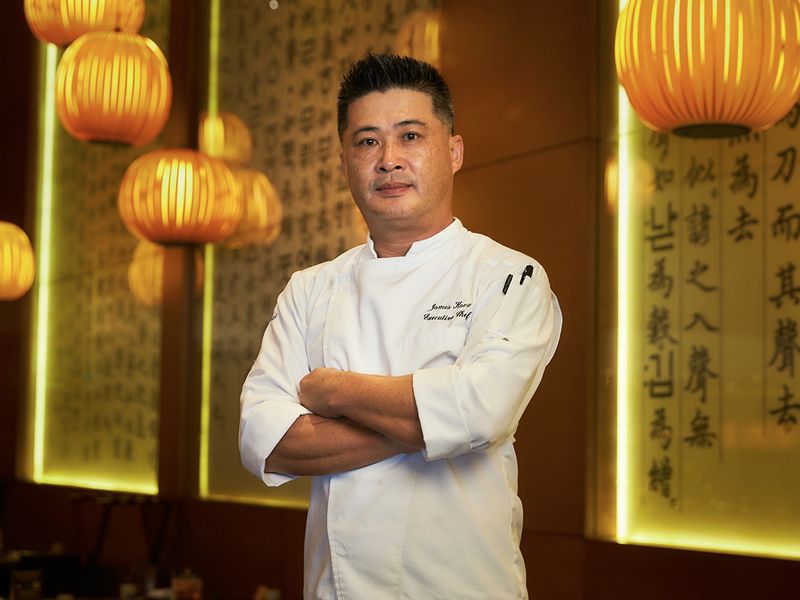
Sonamu, a fine dining Korean restaurant at Asiana Hotel, has graced the UAE food scene since 2011, now going on to become the official catering partners of the Korea Pavilion at Expo 2020 Dubai. Executive Chef James Kang explains to Gulf News that Hallyu has changed the demographic and taste buds of their clientele, adding that now they have several regular Emirati customers due to themselves or their children being avid fans of K-dramas.
He said: “We’ve had several, particularly younger generations who come in and want to try certain dishes they’ve seen on their favourite Korean dramas.
“Some of the more popular dishes that are associated with K-dramas that diners are inclined to order include our tteokbokki, bibimbap, japchae, pajeon (Korean pancakes), haemul jeongol (seafood hotpot) and jjajangmyeon (noodles with black bean sauce).”
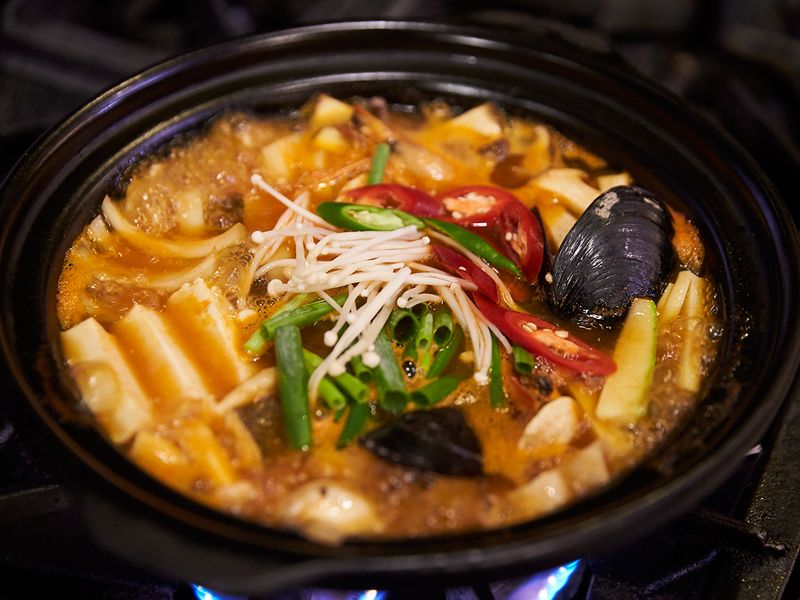
He says that these dishes typically feature in every show and are commonly eaten when friends meet up to gossip or talk about their lives.
Annie Chung, owner of the Hyu Restaurant, which is nestled in the Jumeirah Lakes Towers (JLT) area, has seen a similarly vibrant increase in customers – with younger people visiting often to try their favourite on-screen dishes. “Nowadays, there are so many kinds of TV or YouTube programs that introduce Korean foods such as mukbang, and if people watch Korean dramas, they can easily see actors having these foods. So if anybody is interested in Korean culture, they want to try Korean food such as the barbeque, bibimbap and gimbap,” said Chung.
“I don’t know why but in every Korean gangster movie they always eat jjajangmyeon,” added Chung, followed by an intense slurp of her air noodles. “So that’s why it makes people think ‘what is that? What dish is that?’ Because it looks really delicious. If someone comes in asking for jjajangmyeon, it means they are watching lots of TV dramas or movies.”
Interestingly enough, these customers have a tell-tale sign according to Chung; it’s when they give themselves away with the slightly forced pronunciation of the dish’s name. With its creamy black bean sauce, and thick, chewy noodles complemented by a crunchy pickled yellow radish, jjajangmyeon is a fan favourite.
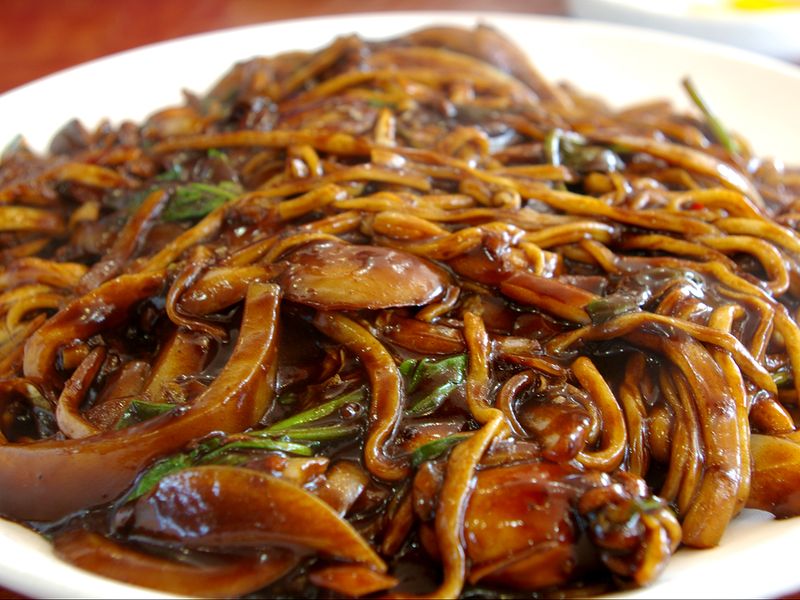
Other than the beloved Korean barbecue, dakgangjeong and bibimbap that they offer, tteokbokki – a daily snack for students after they finish school in South Korea – is also a popular dish at Hyu. They are served in small food stalls, bunsikjip, or tents called pojangmacha, a common setting for K-drama characters to drown their sorrows in food and beverage.
“I also had tteokbokki almost every day when I was a student [in South Korea],” said Chung.
Back in 2006, Sumibiya at Radisson Blu Hotel, Dubai Creek was one of the first ‘yakiniku’ or grilled meat-style restaurants in UAE. Sreejith Purushan, director of Food and Beverage at Radisson Blu, credits the Korean wave in the Emirates for having since greatly increased both footfall and revenue as more diners search for authentic Korean food in Dubai.
“Often times, guests are driven to the restaurants in search of Korean cravings they’ve seen from K-dramas, like kimchi, gimbap, bindae-ttok (mung bean pancakes) and the famous japchae,” he told Gulf News.
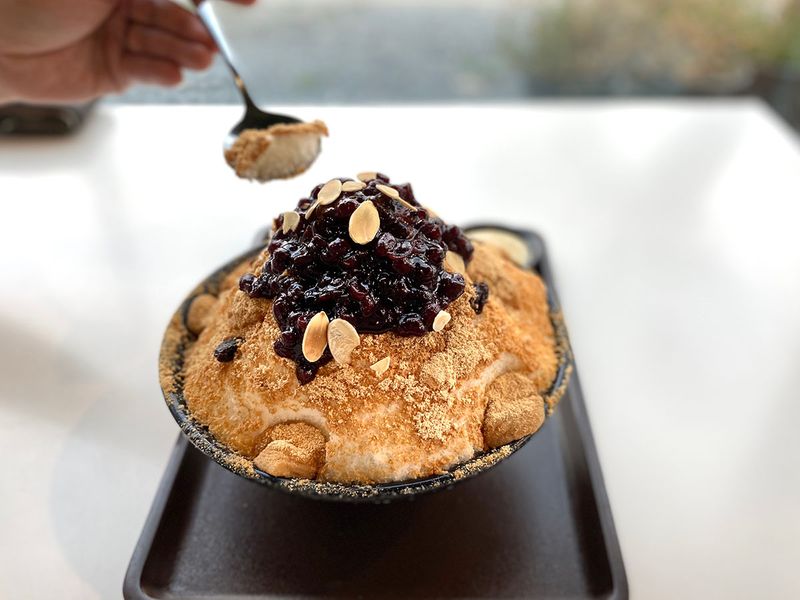
Although Korean meals don’t often have desserts at the end, pastries, candy and popular street snacks feature as the sweets in the cuisine. Bingsu, a favourite for the summer, is a shaved ice dessert soaked in condensed milk and topped with ice cream, often flavoured with red beans, a common filling for many other breads and desserts.
“As far as dessert items go, our bingsu is very popular, which comes in both green tea and mango flavours … very decadent and absolutely delicious,” added Chef Kang.
K-culture in the UAE
Bobbing your head to a song in a language you barely understand and developing the odd ability to speed-read subtitles are the hallmarks of a true fan. K-culture has long expanded past the borders of South Korea as we now find ourselves spoilt for choice more than ever. (And I [Sahar] say this as someone who has been a member of the community for more than a decade – a time when I scanned the web for a pixelated episode of a drama split into four parts.)
With the ease granted by Netflix, Viki and other streaming platforms, the circle of Emirati fans is not far behind either. A 2017 study by South Korea-based researcher Suwan Kim exploring Hallyu in the Middle East published in the international electronic academic journal Kritika Kultura discussed that the love and family-oriented values of Korean TV dramas actually resonate with traditional Middle Eastern culture and viewers.
“Being able to cook your meat yourself … having a burner at your table to keep your hotpot warm, eating family style, and not to mention the vast assortment of Korean side dishes that come with your order - this comfortable sense of familiarity and generosity is very relatable to the Arab community, and always appreciated by other cultures,” agreed Chef Kang.
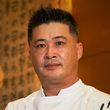
Being able to cook your meat yourself … having a burner at your table to keep your hotpot warm, eating family style, and not to mention the vast assortment of Korean side dishes that come with your order - this comfortable sense of familiarity and generosity is very relatable to the Arab community, and always appreciated by other cultures.
He told Gulf News that Sonamu initially served a loyal Korean clientele: “When we started, the majority of our customers (approximately 60 to 70 per cent) were Korean, which was great for authenticity, but there was a lack of diversity. Now, we have seen a very significant increase in other nationalities and in particular Emiratis.
“Being a homegrown restaurant with an Emirati and Korean owner, this progress and seeing both our cultures come together has been a dream come true, and with the passage of time, we are seeing more and more nationalities walk through our doors.”
The same year, the renowned SMTown Live World Tour touchdown in Dubai drew an enthusiastic crowd of 15,000 fans jumping to the performances of BOA, TVXQ, SHINee, EXO, Red Velvet and many more. SuperM of the same entertainment company saw its debut in the sands of Dubai a year later; the music video ‘Jopping’ also boasts the Burj Khalifa and sleek highways of the emirate behind the dancing seven members. This was amongst other milestones such as the first Korean song danced to by the Dubai fountain and the BTS’s Burn the Stage documentary movie screened in local cinema.
Back then, Chung had not known who BTS or Blackpink were, but her customers soon changed that.

Portals to a comforting world and K-drama fantasies
Restaurants have always been seen as havens, especially for those who have travelled from their native countries and crave a taste of home amidst the overwhelming new experiences. However, in the wake of the Hallyu, Korean restaurants have taken on a new special meaning to international fans situated thousands of miles from the reality of their beloved stars, becoming a portal connecting them to a comforting world.
“My customers say that romantic Korean dramas are really realistic, that it looks quite natural and maybe they want to be like [the lead – it is] their dream fantasy,” said Chung.
“Especially the women, they come here with their husbands, but when they start talking about the stars – for example, Gong Yoo in 'Goblin' – they forget about their partners. They just talk about Gong Yoo,” added Chung, imitating their excited demeanour.
“I always break their dream. Korean men are not that romantic all the time,” Chung said with a laugh.
Interestingly, celebrations of pop-culture milestones also find their homes in Korean restaurants here. Sonamu’s Chef Kang recounts that a regular Filipino customer had recently come in with a group of friends to cut a cake and celebrate the success of the recent BTS release titled ‘Butter’. Chung, too, receives requests to host a ‘BTS Night’ for regulars that are as exhilarating as their stars – with fans dancing and singing in the familiarity granted by Chung’s eatery.
How authentic is authentic Korean cuisine in the UAE?
Korean cuisine includes a large variety of locally grown vegetable dishes or namul, usually eaten seasoned, raw or fermented. Producing an authentic Korean food experience thousands of miles away from the temperate climates and fertile farms of South Korea meant that the right ingredients were not always accessible.
“In another country, it is not always easy to [retain] the authentic recipe because of the ingredients, the cooking method and also the chef – it is not easy to have a Korean chef,” said Chung.
Perilla leaves, a frequently used ingredient in Korean stir-fry, soups, pickled side dishes and even the all-important barbeque ssam wrap come at high prices due to import costs, for instance. Doraji or bellflower root, a staple vegetable used in bibimbap and side dishes as well, is another such vegetable.

“Our braised mackerel and soy and fish sauce are from Korea, so they’re very expensive. This means I would need to pay at least three times more than I would [in Korea],” added Chung. She counts herself lucky to have Chef Young-Hae Kim, a Korean-Chinese cook who has been with her restaurant from the very beginning.
Nevertheless, with specialty stores such as 1004 Gourmet and Hanarum Market in the UAE now, imported Korean products are becoming more easily available for local residents who would like to explore the cuisine on their own.
“Now, there’s no vegetable that we cannot source in UAE,” said Chef Kang.
We spoke to Chang Sup Shin, CEO of 1004 Gourmet, about their experiences amidst this wave.
Banana Milk and Parasite’s ‘Chapaguri’ noodles
In the Oscar-winning 'Parasite', a dish symbolising the economic differences explored in the story combines instant spicy seafood noodles: Neoguri and Chapagetti, which is an instant jjajangmyeon with expensive cubed Korean premium beef. Nicknamed ramdon or ‘chapaguri’, this dish became a hit worldwide. Even the famed Korean food Youtuber, blogger and author Emily Kim released a cooking guide on her channel, Maangchi.
According to Shin, these instant noodles are popular items at 1004 Gourmet stores.
“We’ve attended a lot of events in local universities that promote Hallyu – for example, the Korean cultural events at Zayed University and Sorbonne University – and have customers asking for products they have seen on TV shows,” he said.
Called gim in Korean, seaweed that is roasted and seasoned is one of their bestselling food items. Dumplings or mandu, instant noodles and ice cream are some of the other favourites for UAE customers.

We’ve attended a lot of events in local universities that promote Hallyu – for example, the Korean cultural events at Zayed University and Sorbonne University – and have customers asking for products they have seen on TV shows. We recently started to bring in banana milk which was never available in Dubai, and it has had a very positive response.
Shin added, “We recently started to bring in banana milk which was never available in Dubai, and it has had a very positive response.” Jungkook, the maknae or youngest member of BTS has occasionally contributed to this popularity of this beloved childhood drink internationally. In July 2020, a silhouette ad featuring him, released by the nationwide Indonesian milk brand Indomilk, caused their banana milk to sell out immediately.
Initially set up in 2008 by Dong Chul Shin due to a limited choice of Asian food products locally, 1004 Gourmet saw a positive response from non-Koreans and took off. Shin, who hails from South Korea himself, said, “We felt that our food and culture have the potential to appeal to other nationalities.”
All this talk of food… How can I make it?
With all this discussion of Korean cuisine, you might be tempted to put on your imaginary toque and kick off your own tryst with the food.
If you’ve stepped into a Korean barbeque eatery and cannot recall what goes into your wrap, fear not. We have Chung explaining exactly how you can authentically assemble the Korean barbecue before the ssam or leafy, seasoned wrap housing the freshly grilled meat and veggies is brought to the mouth.
Chef Seung-Joon Lee, Executive Sous Chef at Asiana Hotel, tells us that this beloved current form of Korean barbecue was a product of cultural changes after the Korean War in the mid-1900s.
“After the war, Korea was poor. But around 1970, when Korea’s economy started growing with a lot of factories, Korean people really wanted to change their lifestyle,” Chef Lee said, adding that back then they luckily found cheap beef alternatives and would barbecue and have it with a delicious mix of gochujang, doenjang (fermented soy bean paste) and garlic.

Ssam has long had a place in ancient Korea, where Buddhist temple food gradually came into its own cuisine. Chef Lee says, however, that wrapping bulgogi in leaves for barbecue was a recent development, perhaps prompted by health-conscious Koreans after the Summer Olympic games of 1988. His favourite wrap for barbecue is perilla leaves or kkaenip.
“Perilla leaves have a strong smell, but when you eat with them with barbecue …,” Chef Lee finished with a show of kissing his fingers in delight.
Bibimbap, meaning ‘mixed rice’, is another Korean favourite for healthily finishing up any remaining vegetables and side dishes countrywide. Korean families customise the ingredients according to what they have in their fridges, Chung told Gulf News.
She recounted her own experience growing up: “At home we would prepare side dishes, and two or three days later, nobody wanted to eat them. My mum [wouldn’t] want to cook something new, so we would put all the side dishes together in a really big bowl with rice, adding gochujang, with soybean paste soup (doenjangjigae), to make bibimbap.”
For a step-by-step guide to making homemade bibimbap, you can click here.
Another dish you can kick off your Korean culinary journey with is the kimchi fried rice or kimchi bokkeumbap. A simple, customizable rice dish that is beloved by students with little time to cook, kimchi bokkeumbap is made from fermented kimchi stir fried in steamed rice. Spring onions, mushrooms, garlic, onions and more vegetables can be added to ramp up the flavour, and here is Sonamu’s own kimchi fried rice recipe.
If you’d like to go for a more complex dish to flex your culinary skills, a Korean communal hotpot or jeongol would be the way to go. Historically, a stew reserved for royals and wealthy society, there are various types of jeongol that includes assortments of meat, seafood and vegetables in broth. Haemul jeongol (spicy seafood hotpot), available throughout Korean coastal hubs such as Jeju Island, includes shrimp, black mussels, squid, prawns, octopus and cod fish, and you can find a step-by-step guide by Sonamu’s Chef James Kang here.
Hotter the summer, spicier the samgyetang (chicken broth)
No, this isn’t about f(x)’s catchy jam ‘Hot Summer’ but a look into how seasonal Korean taste buds are.
Although in K-dramas, certain dishes are often highlighted as the ideal for the millennial palate - as you explore further, you will learn about the immense variety of foods that defines Korean cuisine historically. Home to mainly mountainous territory, interspersed with plains cut though by various rivers and surrounded by oceans on three sides – the country’s landscapes have given rise to a dynamic, fertile food culture with various types of seafood and meat, fresh mountainous vegetables and herbs cooked and preserved in myriad ways.
“Korean food is really healthy because we use a lot of fresh vegetables and don’t use a lot of oil. The ingredients are either steamed or boiled. Even if we use oil, we use very little. Many foreigners living in Korea say they lost weight without doing anything,” said Chung, recalling how she used to pick fresh spring onion, lettuce and other vegetables in her mother-in-law’s garden in Seoul.
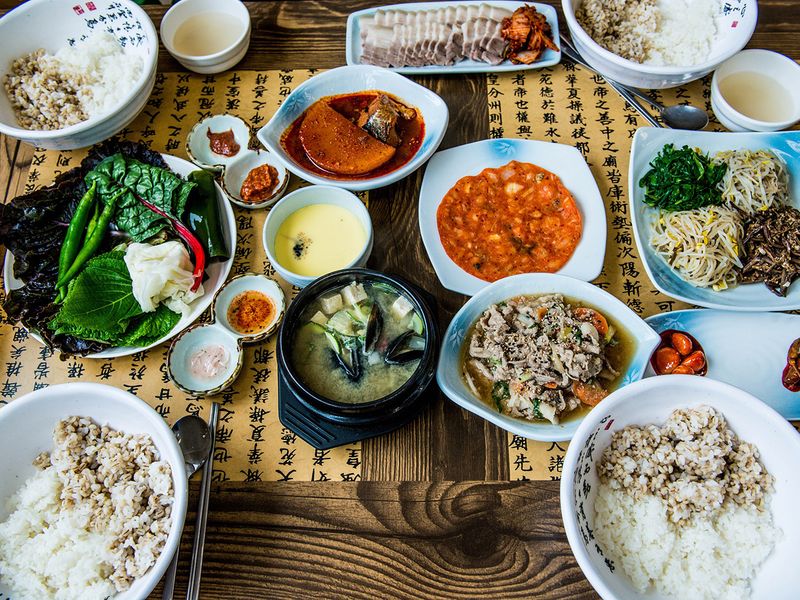
A traditional Korean meal usually includes rice (bap), a stew or broth (guk) to help flavour and digest the rice, side dishes of seasoned or preserved vegetables, meat or seafood called banchan. These side dishes are seasoned with fermented soy pastes such as doenjang, gochujang, and kanjang (soy sauce), and perilla or sesame oil. Fermented seafood called jeotgal and preserved meats are also included, along with the representative keystone of the cuisine – kimchi.
“When I was young, my mother would make around 200 kilograms of kimchi for about three to four months consumption at the beginning of winter; she would use a big hangari (a small earthenware jar traditionally used for fermentation) to bury it. Every time we wanted to eat it, we would take it out, and the kimchi would taste really delicious in the winter,” said Chef Lee, who hails from Seoul.
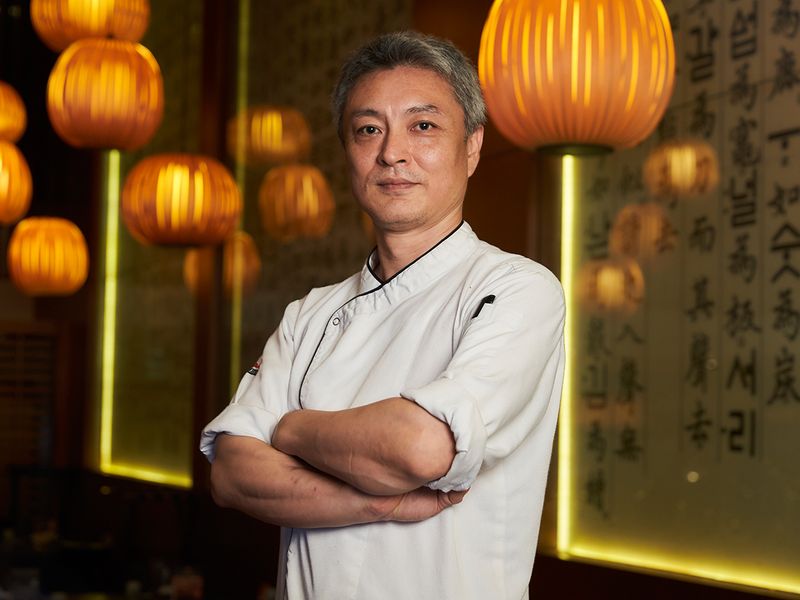
The origin of this beloved dish stretches back a couple of thousands of years, when fermentation emerged as the only way to survive in long, bitterly cold winters. Kimchi was originally white in colour, known as baek kimchi, and now, there are around 200 different varieties local to areas in South Korea. “In every house, the kimchi tastes different because [every] mother’s touch is different,” said Chef Lee.
Preparing kimchi traditionally involves napa cabbage (Chinese cabbage), Korean red pepper paste, anchovy sauce or kanari, a sand-eel fish sauce, sometimes sautéed shrimp amongst others. One of its unique charms is that kimchi tastes a little different every day, thanks to the bacteria hard at work during fermentation.
Chef Lee added, smiling fondly, “But the bacteria is very, very nice.”
If tempted to jump on the kimchi-loving bandwagon, you can find a detailed guide to making kimchi here.
With hot summers punctuated by rains, snowy winters and rich cultural traditions and festivities, the cuisine is also characterized by its special seasonal and festive foods. An example is their samgyetang or ginseng chicken soup that takes on different forms depending on the stages of the Korean summer.
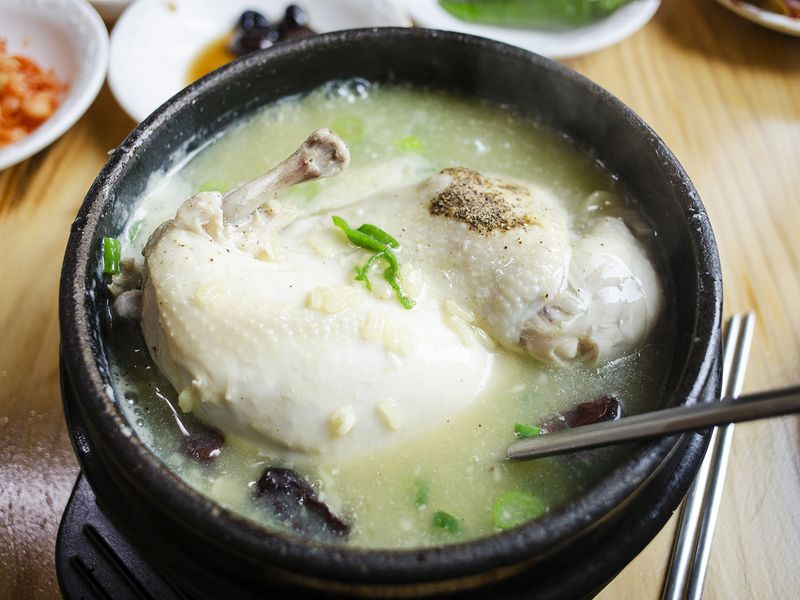
The hotter the summer, the spicier the soup cooked.
Chef Lee explained, “Chobok, chumbok, malbok – these are to celebrate the different phases of summer – the starting heat of the summer, the middle of summer and the end of summer.” While it may seem odd to counter summer heat with spicy food to those of us here in the UAE, this practice draws on a Korean tradition ‘iyeolchiyeol’, which means to fight heat with more heat.
Indeed, this is a testament to the Korean love for spice, as anyone familiar with the flaming red colours of kimchi, tteokbokki, or jjampong (spicy seafood noodle soup) can tell. Gochu, or Korean red pepper has been grown for thousands of years and now features as a dominant spice in the cuisine. Over the past few years, Korea’s beloved instant fire-chicken noodles or buldak-bokkeum-myeon found international popularity in the viral Fire Noodle Challenge that saw influencers worldwide partake of the fiery noodles.
Although native Korean influencers have coolly demolished big plates of fire noodles on their mukbang channels, internationally, the challenge entailed red faces, spluttering and rapid requests for water. It’s time to see how our very own Gulf News team would fare on this challenge.
Fulfilling a 10-year tryst with Korean food
Circling back, in case you’re wondering about how my first try at bulgogi went, here’s a snippet. Sraddha and I made a beeline for a table with the built-in circular grill at its centre, of course. I was prepared to sink my teeth into the juicy meat, determined to listen to it deliciously sizzle on the hot grill as it often does in K-dramas.
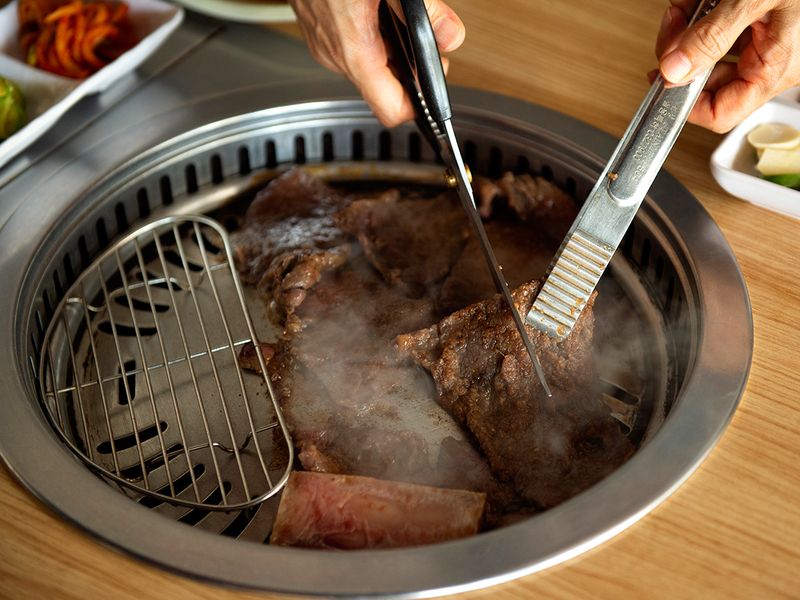
I had to be reminded that eating Korean barbeque is a process to be savoured – one simply does not dig in the moment the spread is laid out. By the time you’re done with cooking the meat, dunking it in the onion dip, seasoning it with fermented soy bean paste and layering it on your lettuce wrap, the end result is so rewarding that you do it all over again.
Rest assured, by my third wrap, I was guilty of abandoning the lettuce in favour of guiding the marinated beef to my mouth straight from the grill. Might I add that Korean BBQ is definitely not for the impatient.
In the mood for Korean food? Try out the recipes for Korean vegetable pancake with sweet potato and onions or Yachaejeon, kimchi fried rice, bibimbap, haemul jeongol and the traditional Korean kimchi.
- The writers are interns with Gulf News.
Know of more Korean recipes? Tell us about it on food@gulfnews.com



